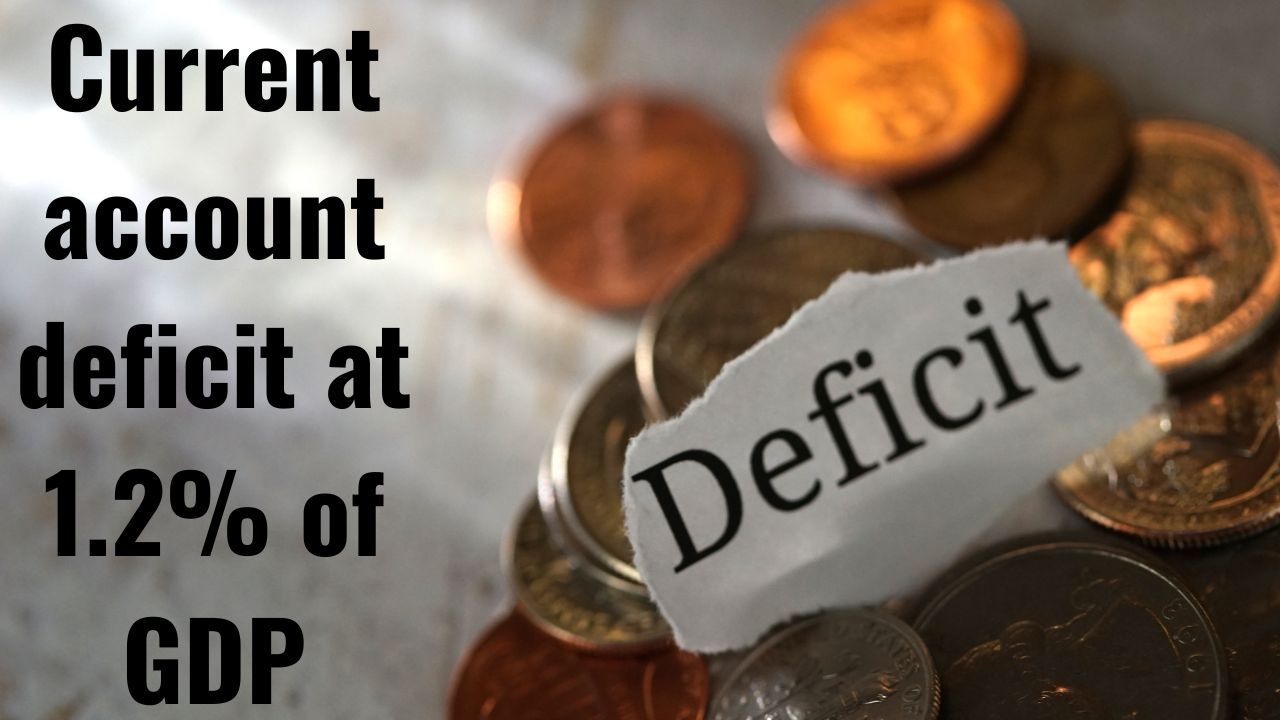Thank God, current account deficit lower in March quarter

Even as there has been a spate of bad news on the macro front, there has also been some good news on the Current Account front. The Current Account Deficit (CAD) for the March 2022 quarter came in sharply lower by $7.76 billion for March 2022 quarter as compared to the December 2021 quarter. What do we understand by current account deficit. It starts with the trade deficit and also adjusts for services trade as and payments. Current account deficit narrowed from $22.16 billion in December 2021 quarter to $13.40 billion in Q4FY22.
Is a current account deficit good or a surplus is good. Let us look at some data point that are not too comfortable. For example, India reported a current account deficit in 8 quarters and a current account surplus in 4 quarters out of the last 12 quarters. The bad news is that in 3 out of the 4 quarters of current account surplus, the economy was wracked by COVID and negative growth. In India, current account surplus has been synonymous with bad times while a current account deficit has been seen in good times.
Reasons for the current account deficit narrowing in March 2022
Here are some key takeaways
1) Merchandise trade deficit narrowed from $-60.4 billion to $-54.5 billion quarter on quarter. Exports kept pace with the rise in imports and higher crude prices.
2) The services surplus for the March quarter improved sequentially from $27.8 billion to $28.3 billion. This combined with a lower merchandise trade deficit to reduce the current account deficit in the March 2022 quarter.
3) An important reason for this fall in the deficit was the fall in expenses, especially the interest outflows. Primary outflows for interest and dividends on investments fell sharply from $11.70 billion to $8.40 billion on a sequential basis. Of course, for now, we are not doing any crystal ball gazing. We just look at the past.
The table below captures the gist of the current account deficit in March 2022 quarter.
|
Pressure on Current Account (CA) |
Amount |
Boosting the Current Account (CA) |
Amount |
|
Q4 Trade Deficit |
($54.50 bn) |
Q4 Services Surplus |
+$28.30 bn |
|
Primary A/C - Interest |
($8.40 bn) |
Secondary Income |
+$21.20 bn |
|
Negative Thrust on CA |
(-62.90 bn) |
Positive Thrust on CA |
+$49.50 bn |
|
Current Account Deficit |
(-$13.40 bn) |
Data Source: RBI
The current account deficit in March 2022 was nearly $7.76 billion lower as compared to the December 2021 quarter. This is on account of lower merchandise trade deficit, higher services surplus and lower primary account outflows on interest and dividends paid out.
Beyond Q4FY22, let us look at FY22 full year current account
Here is what we decipher from the full year current account numbers for FY22.
1. Current account deficit for FY22 was $-38.7 billion against surplus of $24 billion in FY21 on the current account. Thus current account as percent of GDP moved from +0.9% in FY21 to -1.2% in FY22.
2. Merchandise trade deficit contributed $189.5 billion to the current account deficit, which was mitigated by inflows of $107.5 billion in FY22 as services surplus. The higher primary outflows at $37.3 billion were offset by a 10% spike in secondary income.
3. How was this current account gap filled up and did it impact the fiscal deficit? Not exactly. Despite FPI outflows, net capital inflows were $38.2 billion during FY22 on the capital account, largely driven by positive FDI flows i.e. foreign direct investment.
As a result, the forex reserve accretion was just $30 billion in FY22 against $80 billion in FY21.
In June quarter, expect current account problems
India could have some serious problems on the current account in the June 2022 quarter. Here is why. India closed FY21 with combined deficit of $12.75 billion or $1.06 billion a month. In FY22, this figure spurted to $87.79 billion, or $7.32 billion a month.
Now, let us look at the first 2 months of FY23, where we have data.
India could close FY23 with overall deficit of $150 billion, substantially higher than FY22. That will put a lot of pressure on the current account. The first signals of that pressure will be visible as early as in the June 2022 quarter itself.
- Flat ₹20 Brokerage
- Next-gen Trading
- Advance Charting
- Actionable Ideas
Trending on 5paisa
Disclaimer: Investment in securities market are subject to market risks, read all the related documents carefully before investing. For detailed disclaimer please Click here.

 5paisa Research Team
5paisa Research Team